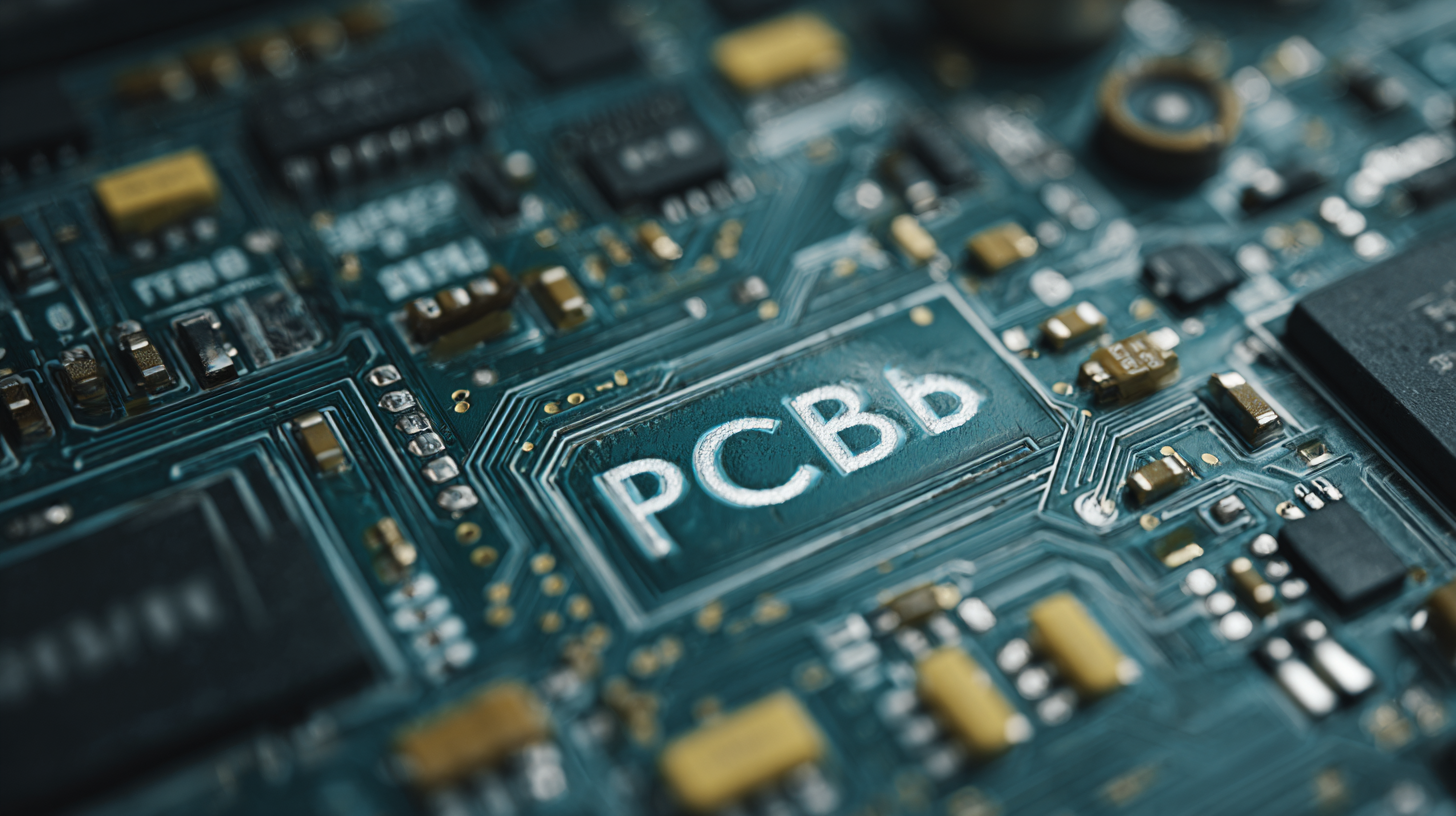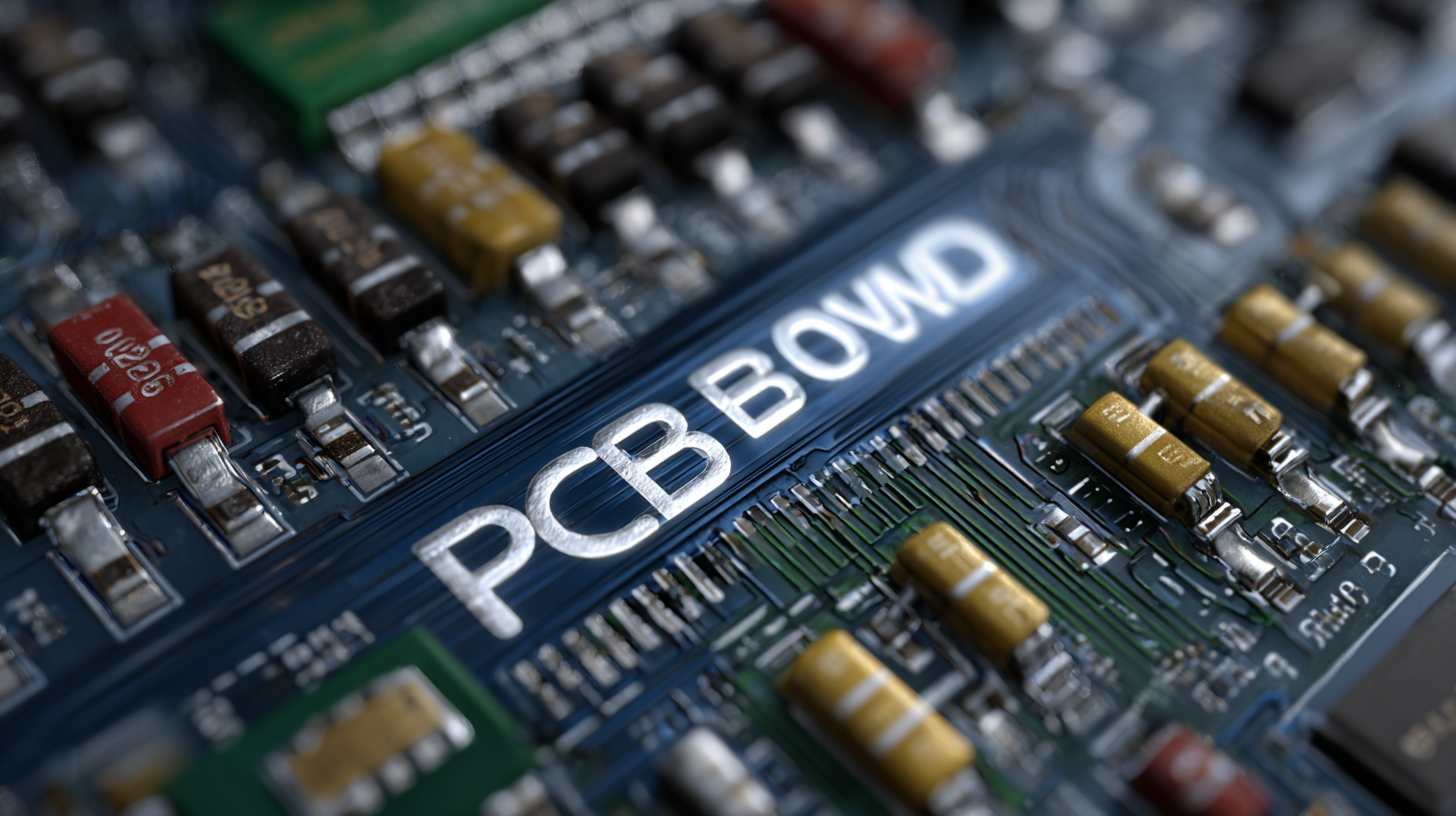JHY PCB Blog Hub
Your Source for Expert PCB Design, Manufacturing, and Assembly Insights – Stay Informed with 2025 Trends!
Unlocking the Secrets of Best Pcb Board Software for Your Next Project
In the rapidly evolving field of electronics, selecting the right PCB board software is crucial for engineers and designers aiming to streamline their workflow and enhance productivity. According to a recent report by MarketsandMarkets, the global PCB design software market is projected to grow from $2.47 billion in 2020 to $4.18 billion by 2025, reflecting a compound annual growth rate (CAGR) of 11.1%. This growth underscores the increasing reliance on sophisticated PCB board software tools that facilitate complex design processes while ensuring efficiency and accuracy. In this guide, we will explore the essential features, leading software options, and best practices to help you choose the most suitable PCB board software for your next project, empowering you to unlock your full design potential.

Understanding PCB Design Software: Key Features and Benefits
When embarking on a new PCB design project, selecting the right software is paramount. PCB design software offers a plethora of features that enhance efficiency and accuracy in the design process. According to a 2022 industry report by MarketsandMarkets, the global PCB design software market is projected to reach $1.2 billion by 2025, signifying an increasing reliance on sophisticated design tools. Key features such as real-time simulation, advanced routing algorithms, and user-friendly interfaces not only save time but also reduce the likelihood of costly design errors.
One critical benefit of utilizing modern PCB design software is improved collaboration among teams. With an estimated 40% of engineers working remotely, tools that provide cloud-based access and version control are becoming essential. A study by TechArc revealed that teams using integrated PCB design tools reported a 30% increase in project efficiency. Features like regulatory compliance checks and library management further streamline the design process, enabling engineers to focus on innovation rather than troubleshooting issues. As the demand for faster and more reliable electronics continues to grow, investing in top-tier PCB design software is vital for any project aiming for success.

Comparative Analysis of Popular PCB Design Tools in the Market
In the rapidly evolving landscape of PCB design, the recent acquisition of a prominent design tools provider by a semiconductor giant underscores the intense competition and innovation in the market. The electronic design automation (EDA) market, valued at approximately $12.9 billion in 2022, is projected to grow at a staggering compound annual growth rate (CAGR) of over 10% from 2023 to 2032. This indicates a significant demand for advanced PCB design tools that can cater to the increasing complexity of electronic circuits and systems.
As businesses seek to adopt more cloud-based EDA solutions, scalability and collaboration are becoming essential features. These platforms not only streamline the design process but also enhance productivity by allowing teams to work seamlessly across geographical boundaries. The shift towards cloud services is driving substantial growth in the market, making it imperative for designers to choose software that leverages these capabilities effectively.
Moreover, the importance of efficient waste management in PCB production and assembly is gaining attention. The global PCB and PCBA waste recycling market is expected to reach $19 billion by 2032, with a growth rate of approximately 12.6%. This trend highlights the growing need for environmentally sustainable design practices, encouraging companies to consider the lifecycle of their products right from the design phase. Therefore, selecting the right PCB design software is not only about functionality but also about aligning with sustainable practices in the industry.
Cost-Effectiveness: Choosing Affordable PCB Software for Small Projects
In the rapidly evolving world of electronics, selecting the right PCB (Printed Circuit Board) design software can be a pivotal decision, especially for hobbyists and small project developers. With a growing number of affordable options available, it becomes imperative to consider the cost-effectiveness of these tools. According to a recent industry report, approximately 70% of aspiring designers prioritize budget when choosing PCB software, highlighting the need for affordable yet robust solutions that do not compromise on features.
Cost-effective PCB software solutions can empower users to create intricate designs without the burden of high expenses. Tools that encompass essential features such as intuitive interfaces, extensive libraries, and simulation capabilities are now available at a fraction of the cost traditionally associated with professional-grade software. For instance, market analysis shows that leading affordable software can reduce project costs by over 30%, enabling hobbyists and small businesses to innovate without financial strain. Especially as technologies like portable soil moisture sensors gain traction among farmers and citizen scientists, the demand for accessible design tools continues to rise, illustrating the necessity for efficient, low-cost PCB software in today's market.
Cost-Effectiveness of PCB Software for Small Projects
Navigating Licensing Models: Free vs Paid PCB Software Options
When embarking on a new PCB design project, one of the first decisions you'll face is choosing the right software. The landscape of PCB design software is diverse, featuring both free and paid options, each catering to different needs and skill levels. Free PCB software can be an excellent starting point for hobbyists and students, allowing them to grasp fundamental design concepts without financial commitment. However, these tools often come with limitations such as restricted features, fewer design rules, and occasionally a steeper learning curve due to less user support.
On the other hand, paid PCB software generally offers a more robust set of features, including advanced simulation tools, more extensive libraries, and professional-grade design capabilities. This investment can significantly enhance productivity and help avoid costly mistakes in the prototyping phase. Companies looking to produce high-quality, complex boards often justify the expense by considering the time saved and the level of precision achieved with these tools. Moreover, many paid options come with dedicated customer support, which can be invaluable for troubleshooting and optimizing designs. Ultimately, the choice between free and paid PCB software will depend on your specific needs, familiarity with PCB design, and budget considerations.
Unlocking the Secrets of Best PCB Board Software for Your Next Project - Navigating Licensing Models: Free vs Paid PCB Software Options
| Software Type | Licensing Model | Features | Target Users | Estimated Cost |
|---|---|---|---|---|
| PCB Designer A | Free | Basic design tools, 2D/3D rendering | Hobbyists, Students | $0 |
| PCB Designer B | Paid | Advanced simulation, multi-layer support | Professional Engineers | $499 - $999 |
| PCB Designer C | Subscription | Cloud-based collaboration, design automation | Startups, Small Teams | $30/month |
| PCB Designer D | Free Trial, Paid | Integrated CAD tools, library management | Corporate Teams | $30 - $50/month after trial |
| PCB Designer E | Open Source | Customizability, user community support | Developers, Enthusiasts | $0 |
Best Practices for Maximizing Efficiency in PCB Board Design Software
When it comes to PCB board design software, maximizing efficiency is crucial for the successful completion of your projects. One of the best practices is to choose software that offers an intuitive user interface. An easy-to-navigate design environment allows for quicker adjustments and iterations, reducing the time spent fumbling through complex menus. Additionally, utilizing customizable toolbars can streamline your workflow by putting frequently used features at your fingertips, enabling you to focus more on the creative aspects of your design.

Another effective strategy is to leverage automation features within the software. Automated design rule checks, for example, can save valuable time by identifying potential errors during the design process. Incorporating simulation tools can also help you predict the performance of your PCB before fabrication, reducing costly revisions later. Moreover, keeping your design process organized by using version control tools ensures that you can maintain a clear record of changes and collaborate seamlessly with team members, further enhancing productivity and reducing design cycle times.










